“Language, Literature, and Culture Diversity” University
The Indonesian Literature Student Association is again presenting a Literature Workshop with the theme "Language, Literature and Culture Diversity Room." This third Literature Workshop was different from the first and second Literature workshops, because on this occasion the Indonesian Literature Study Program, Udayana University, collaborated with the Indonesian Literature Study Program, Ahmad Dahlan University. This event was held online through Webex Meetings and offline which took place at the Widya Sabha Mandala Auditorium, Faculty of Humanities, Udayana University, on Friday, December 30, 2022, at 14.00 WITA.
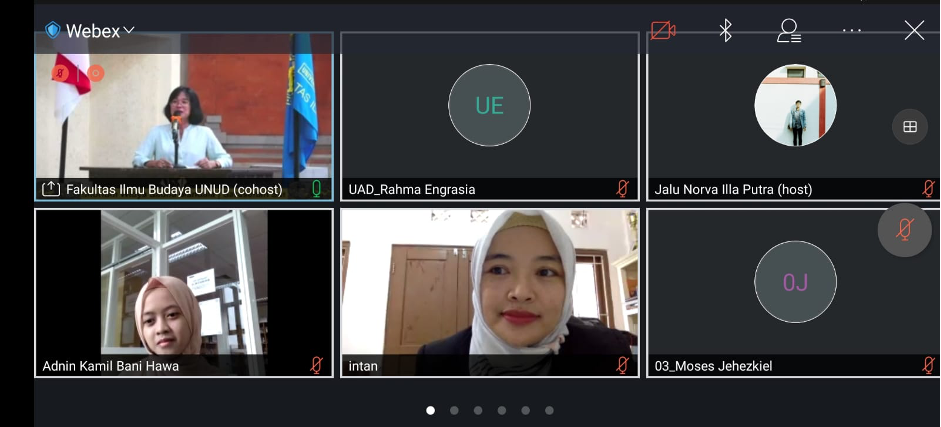
Offline Literature Workshop Through Webex Meet.
This event was attended by 97 lecturers, invited guests, and participants from several universities offline and online. In addition, there will be four speakers with a concentration in literature and linguistics. Two speakers came from the Indonesian Literature Study Program, at Udayana University, namely Ni Kadek Arysna Dwi Intari and Fani Yudistira. The speakers Adnin Kamil Bani Hawa and Raja Syeh Anugrah came from the Indonesian Literature Study Program, Ahmad Dahlan University.
The Literature Workshop was opened with remarks from the Coordinator of the Indonesian Literature Study Program, Dr. I.G.A.A. Mas Triadnyani, S.S., M. Hum. He expressed his hope that students could share experiences and knowledge.
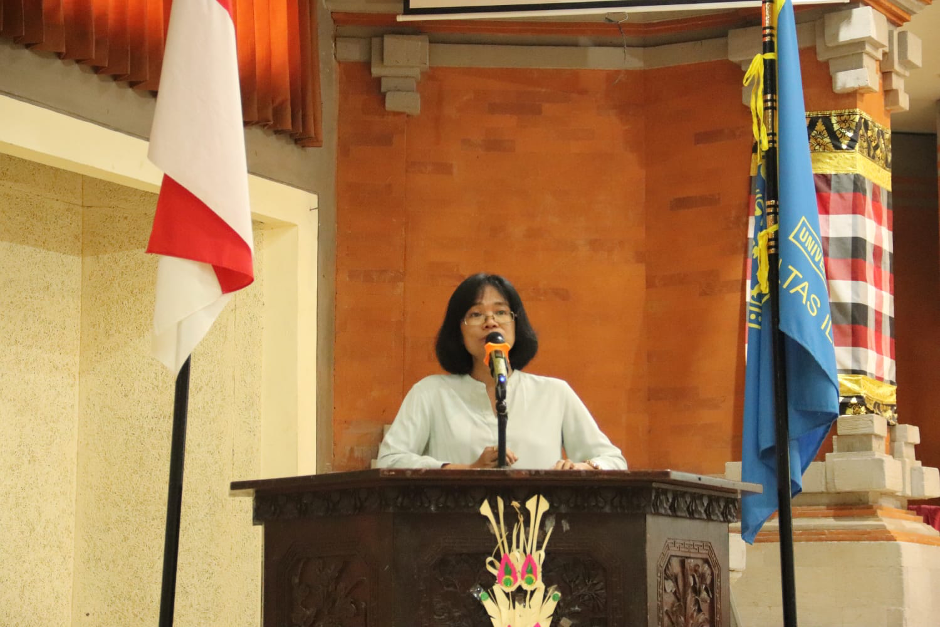
Speech by the Coordinator of the Indonesian Literature Study Program
Dr. I.G.A.A. Mas Triadnyani, S.S., M.Hum.
"With this activity, students can share experiences and knowledge on what students have acquired so far, knowledge and also various other skills."
The second speech was delivered by the Head of the Indonesian Literature Study Program, Ahmad Dahlan University.
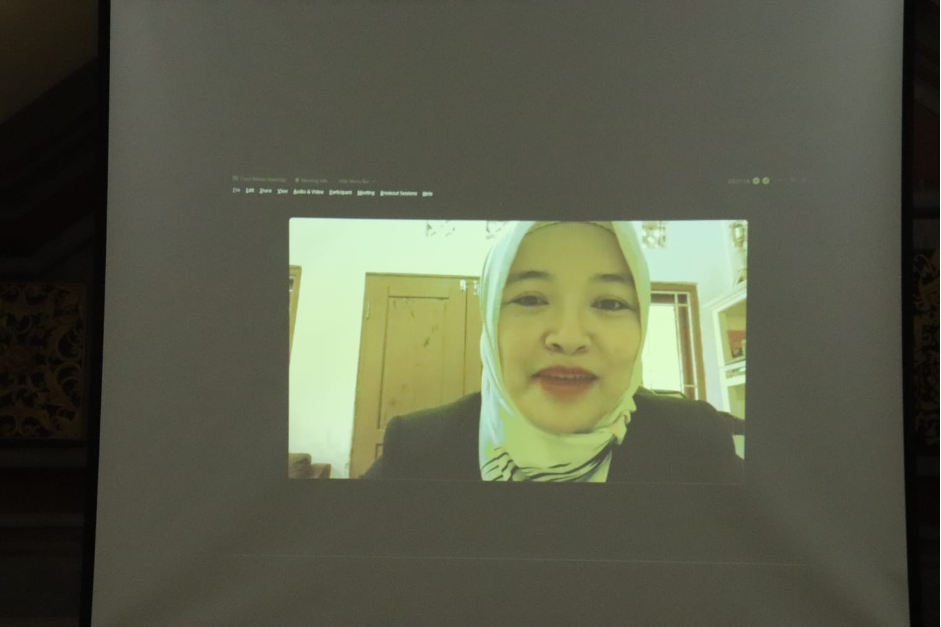
Speech by the Coordinator of the Indonesian Literature Study Program
Ahmad Dahlan University Through Webex Meet.
"I think this is a very good and useful program for students and also lecturers between the two universities. Friends can get networks, connections, friends, and also knowledge.”
Presentation of the first Material
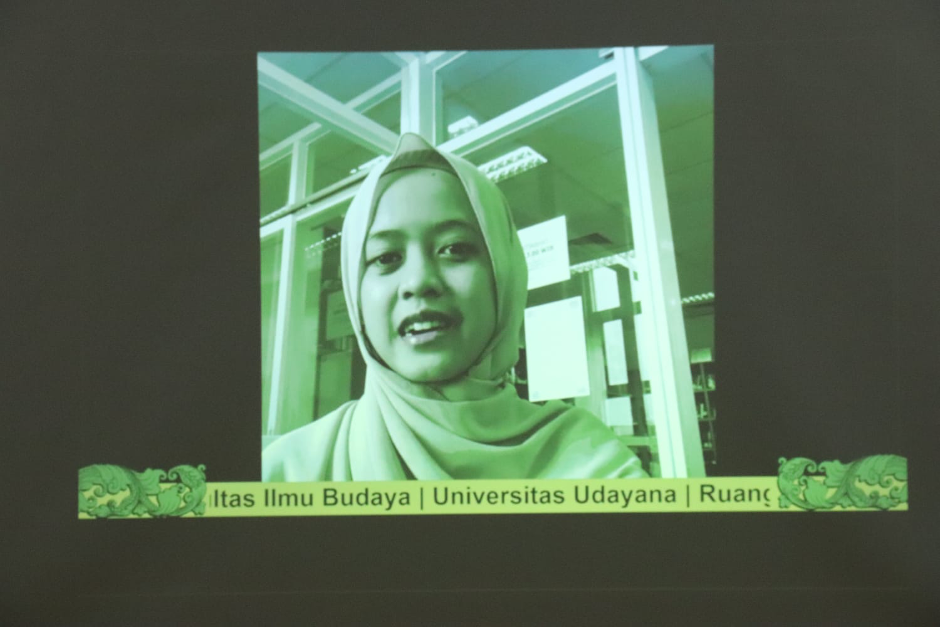
Presentation of Material from Adnin Kamil Bani Hawa Through Webex Meet.
The first presenter was Adnin Kamil Bani Hawa, a student of the Indonesian Literature Study Program, Ahmad Dahlan University. With a concentration on linguistics, entitled "Phonological Characteristics and Causes of Kemayu Speech Disorders in Celebrity Lucinta Luna."
In his research, Adnin explained that kemayu speech disorder is a type of psychogenic disorder. “Psychogenic disorders can be divided into several types, including slender speech, talkative speech, stuttering, and spoiled speech. Kemayu it self refers to men who have a feminine attitude. The movements of someone who has a speech disorder kemayu tend to be graceful and the tongue is slightly protruded. The sound will be made as soft as possible. In general, when a man grows up, the male vocal cords will lengthen and thicken. This is influenced by the presence of the male hormone testosterone. This is why a boy who is growing up or in puberty experiences a change in voice."
"A person who has a speech disorder cannot be separated from the reality of psychological aspects such as motivation, responses to situations, and experiences as well as verbal behavior. Such a person's feelings or mental condition can be influenced by several factors. One factor that plays a big role in this is the family and social environment.”
"The phonological features that appear in Lucinta Luna include long durations, low tones, and emphasis. Long durations often appear at the end of utterances. Lucinta Luna is seen extending the duration at the end of the story she made. This is similar to the style of women's speech in general, which often extends the duration at the end of the speech," she added in the material.
Second Speaker
Ni Kadek Arysna Dwi Intari, a student of the Indonesian Literature Study Program, Udayana University, could not explain the material she had made, due to being unable to attend the event.
The second material presentation entitled "Analysis of Writing Language Errors in BIPA Level 1 Student at Udayana University" was represented by moderator Sahfitri Br. Sembiring. This material discusses the number of speakers of Indonesian from within and outside the country, as well as an analysis of errors obtained from level 1 BIPA students at Udayana University.
According to data from UGM news articles, Indonesia has more than 300 million speakers in the world. Meanwhile, in Indonesia, there are more than 250 million Indonesian speakers out of a population of more than 227 million. This shows that Indonesia has quite a lot of speakers from all over the world and native speakers. Therefore, to preserve the Indonesian language and maintain the existence of Indonesian in the world, the Indonesian government provides scholarships for other countries who wish to study Indonesian, called Dharmasiswa, which is held in BIPA (Indonesian Language for Foreign Teachers) classes.
In the language learning process, the BIPA class hones Indonesian language skills in terms of listening, reading, writing, and speaking which are carried out according to the student's level of ability. Language errors are often found in BIPA students and are quite diverse. Such as the use of inappropriate words, wrong sentence structures, and spelling that is not following the rules of the Indonesian language. Arysna found a cause for language errors by level 1 BIPA students at Udayana University based on interviews with a level 1 BIPA student and the author's direct observation during culture class.
Presentation of Third Material
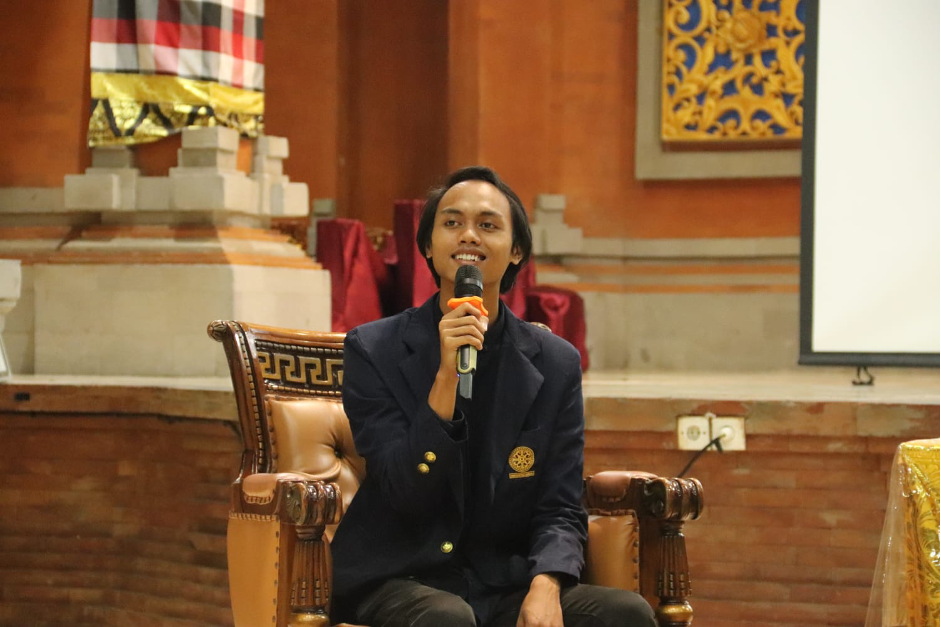
The third material was delivered by Fani Yudistira, a student of Indonesian Literature, Udayana University with a concentration in literature entitled "Tafsirnya Cinta in Aan Mansyur's Poetry." Fani analyzes two poems about love. In the material, it is stated that love is absurd “Love is something absurd, it does not have a physical form like a chair or table, but it can be felt or experienced very concretely. Because love is an absurd form, a way or something is needed to express the feeling of love.
In the material, from the poem “Love” it is explained “Love is an understandable matter if we are "damaged" either by ourselves or by other things outside of ourselves. Love is an attempt to destroy or be damaged, destroy and burn. However, there is another effort behind these two things, namely an attempt to assemble and restore something that has been destroyed, even though in the end this effort will only bring us back to the destruction that has happened before."
In the second poem "Fall in Love" it is explained that this poem describes falling in love as a verb. "This poem and its relation to the title, "Fall in Love" has several possibilities, namely interpreting a job. Suspecting that he is falling in love turns out to be doing something else, falling in love or falling sad for example. Love as a feeling that is experienced, is close to feeling happy, like, or happy even though it is also close to feeling sad, disappointed for example. Because of that, we often overdo it and conclude that when we are close to someone, chatting day and night with them, and even going out and eating together with them many times, makes us jump to conclusions that we have experienced something called falling in love.”
Fani concluded the material he brought, “That is my interpretation of love in Aan Mansyur's two poems. The first poem "Love," is the reason, and purpose, or it can also be said to be the answer to the question "why was love created? The poem describes that love is something that can be understood if we are damaged by ourselves or something outside ourselves. Love is a matter of destroying or being destroyed, but behind these two things, there is another effort, which is to arrange and restore something that has been destroyed, even though in the end this effort will only lead us to our previous destruction. Meanwhile, in the second poem "Falling in Love." Falling in love is a work of misjudgment like a burning piece of paper that thinks it is fire. Misconceptions have various possibilities or assumptions that often lead us to be mistaken. We think we are in love, but in reality, we haven't or aren't even experiencing it.”
Fourth Material
The fourth category is entitled “Symbolic Interpretation of “Dayah” in the Novel Lampuki by Arafat Nur” with a concentration on literature. Presented by students of the Indonesian Literature study program, Faculty of Literature, Culture and Communication, Ahmad Dahlan University, Raja Syeh Anugrah. He explained literature from a cultural point of view. Like his analysis of the novel Lampuki by Arafat Nur. "Arafat Nur as an author tries to retell a social, cultural, and bloody conflict between GAM (Free Aceh Movement) and the military that touches on the cultural entities of the people of Aceh."
“Arafat Nur as a writer is considered to have experienced directly how polemics and conflicts occur. This is what motivated Arafat Nur to write the novel Lampuki, which was abstracted from empirical sources. Although, coherently, Lampuki's novel seems like a historical novel or has the impression of being full of conflict. Arafat Nur is not talking about that, so with this, the writer also feels the need to examine it in a symbolic interpretive way using a literary anthropological approach from a system of symbols called "Dayah."
Raja cites the opinion of Endraswara (2013), namely, "anthropology consists of two words, namely anthropology and literature. Anthropology is divided into Anthropos and logos which means the science of humans, and literature is divided into sas and tra which means texts that contain instructions. However, broadly, literary anthropology is a study of the mutual influence between literature and culture. The literature will absorb ideas from the culture that surrounds it. Conversely, culture can change and develop based on literary pulses.
"From the representation described by Arafat Nur in the novel Lampuki, there is another interesting aspect of this novel, namely the intersection of Dayah as a culture that is closely attached to the people of Aceh. With the condition of the DOM (Military Operations Area) in Aceh during the turbulent period the conflict was still raging," he added.
Closing
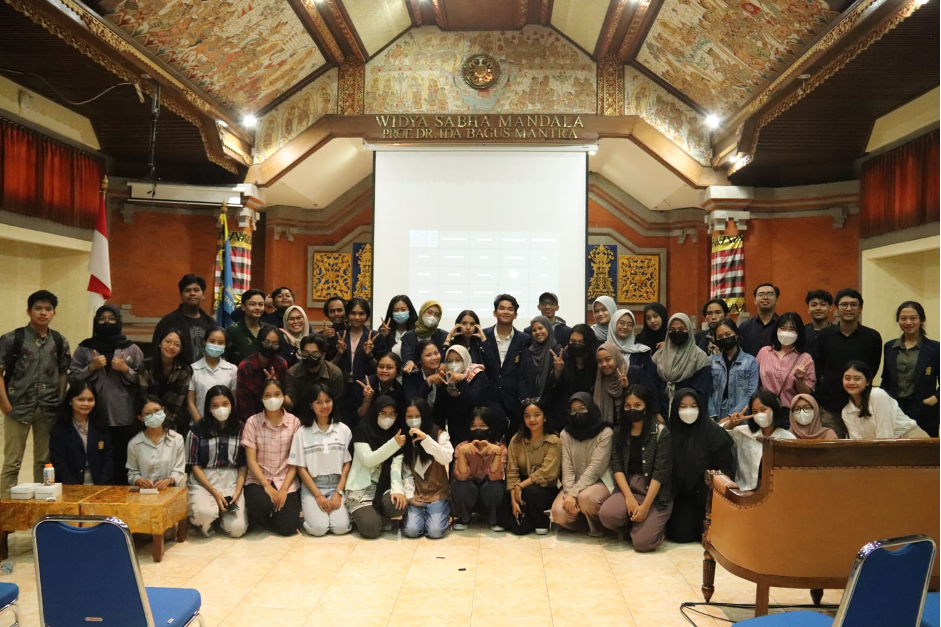
Group photo of participants and lecturers.
The Literature Workshop this time ran smoothly. The enthusiasm of 97 participants in the Literature Workshop added to the excitement of the event. The event ended with a poetry reading performance by Indonesian Literature students and lecturers, followed by a photo session with the participants. (SASINDO)
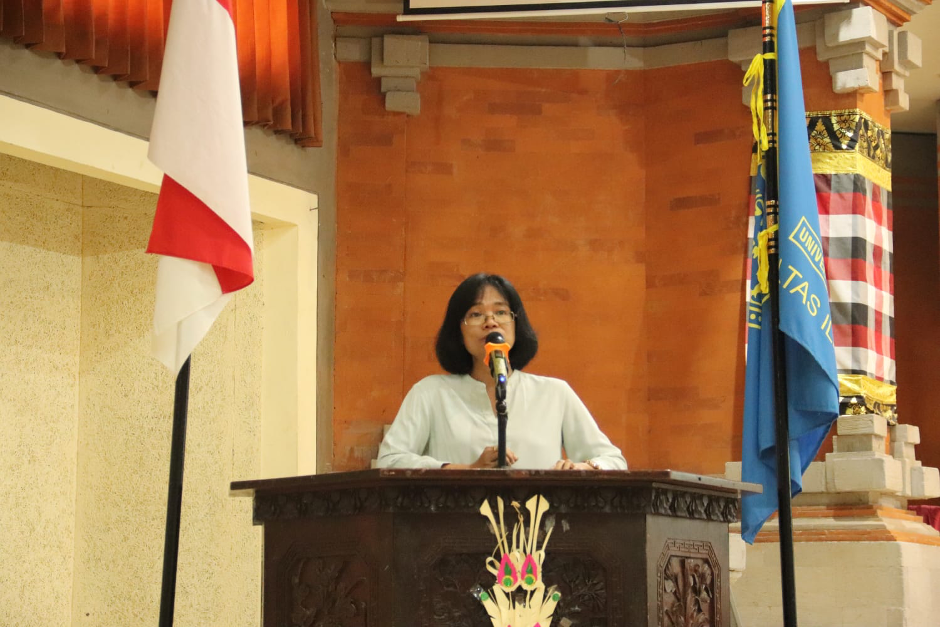

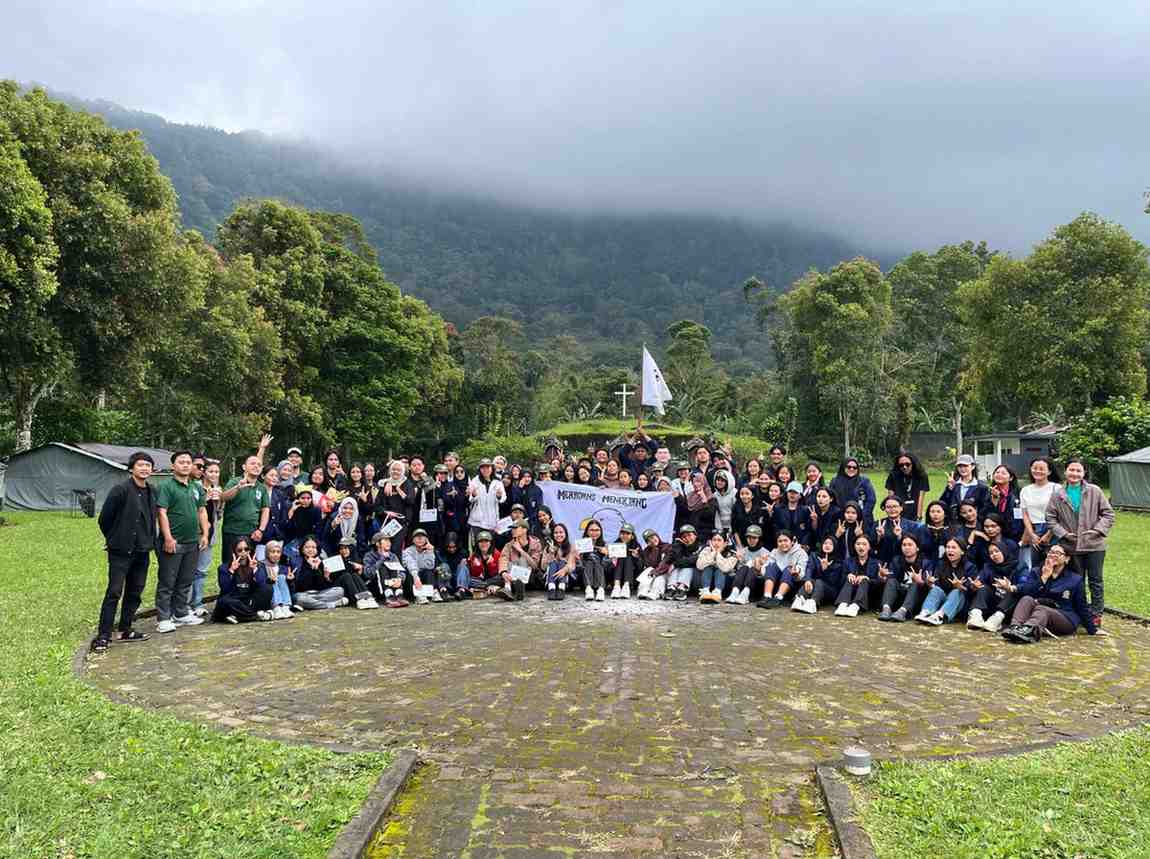
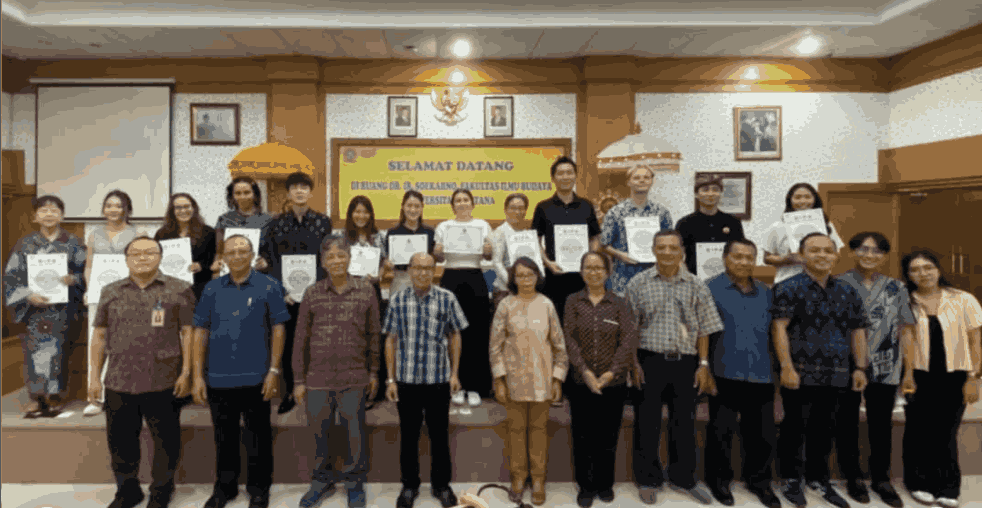
FACULTY OF HUMANITIES